| |

Fig. 1
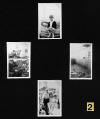
Fig.2
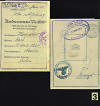
Fig. 3

Fig.4
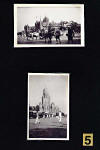
Fig. 5
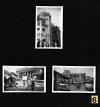
Fig. 6
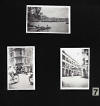
Fig. 7
|
By
Ralph Harpuder
Most, if not all Shanghailanders, who are still alive
today will undoubtedly recall the ship that took them to Shanghai in the
late 30‘s and early 40‘s. For them it was a strange and faraway place
somewhere in East Asia. Some of those ships will be discussed and
illustrated further in this report.
When entry visas, mainly for North and South America became more difficult
to obtain, and after November 9th, (Kristallnacht), impossible, remaining
Jews were trapped and in desperation. The only place where they could
possibly emigrate to was Shanghai where no visa was required. A passage
ticket from Lloyd Triestino, bought for my stepfather by his sister, was
sufficient proof for the Nazi regime that he was going to leave Austria;
thus his release from Dachau Concentration Camp. In order for him, and other
remaining Jews, to embark on ships sailing to the Orient, they had to take a
train over the Brenner Pass, located between Austria and Italy, to Genoa.
The entrance to the Brenner Pass was the final Nazi checkpoint that Jews
were nervously hoping to cross.
At that time, Lloyd Triestino was the largest Italian steamship company that
had a regular line of steamers sailing to the Far East. Its ships were
renowned for their luxury and speed. A picture postcard of the Conte Verde,
an 18,765 GRT liner is shown in
figure one.
Originally built for the Lloyd Sabaudo Line, the Conte Verde came under the
Lloyd Triestino flag in 1932. Family photographs, including of yours truly,
taken on this ship en-route to Shanghai, are shown in
figure two. Several ports along the
route to Shanghai allowed passengers to disembark for sightseeing. A German
passport (Kinderausweis) of yours truly, illustrated in
figure three, shows a rubber stamp from
the Harbor Police in Colombo that allowed passengers on shore. Colombo was
located in Ceylon, now, Sri Lanka.
Figure
four shows the Conte Verde in Colombo, docked at sea, away from the
peer.
Passengers fortunate enough in getting out from Germany their Leica or
Rolleiflex, took photographs of cities and ports that were included on the
Conte Verde itinerary. The following shots were taken on March of 1939 on
the way to Shanghai: The photographs in
figure five were
taken in Bombay. Photographs in
figure six
and figure seven were shot in Colombo
and Singapore respectively/
The Conte Rosso, a 15,000 GRT luxury liner, not shown in this report, was
referred to as the sister-ship of the Conte Verde. It was seen many times
docked at the Hongkew wharf near the Bund.
Figure eight shows a list of ships, including the Conte Verde, arriving
and departing from Shanghai.
As an added note: On September in 1943, after the Italian capitulation, the
crew of the Conte Verde sank their ship on the Whangpoo River near the Bund
before the Japanese could take possession of it.
The Conte Biancamano, a 24,416 GRT vessel, sold to Lloyd Triestino in 1937,
also carried Jewish passengers from Europe to Shanghai. It is shown in
figure nine. Another ship, built
originally for the Lloyd Sabaudo Line that later transferred to the Italian
Line, did the same. It was the Conte Grande, a 25,661 GRT ship illustrated
in figure 10.
Figure 11 shows a message on a
radiogram from relatives in Europe to the family Goldmann that had already
previously arrived in Shanghai. The message conveyed their departure date
from Genoa on the Conte Grande.
The ship’s line emblem of Lloyd Triestino and Lloyd Sabaudo are shown on
their respective envelops in
Figure 12.
Not all refugees that left Germany and Austria during the last moments
before the war came to Shanghai on Italian luxury liners. A smaller
contingence of refugees also booked on Japanese passenger and cargo ships.
An example was the TSS Hakone Maru that sailed from Naples, a city and port
in southern Italy. The Hakone Maru is shown in
figure 13.
Of course, once the luxury liners and other vessels that brought stateless
refugees to Shanghai arrived, stark reality set in. Most came stripped of
their belongings and had to rely on Jewish charitable organizations to help
them to set foot under most primitive and deplorable circumstances;
the rest is history. |

Fig.8
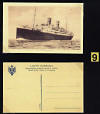
Fig. 9
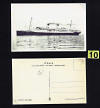
Fig.10
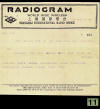
Fig.11
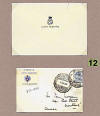
Fig.12

Fig. 13
|
![]()